Curtiss-Wright
The Curtiss-Wright Corporation was established in 1929 after a merger of the Curtiss Aeroplane and Motor
Company and Wright Aeronautical Company. During the 1930s and 40s the firm produced not only aircraft,
but aircraft engines and propellers as well, earning for itself status as the largest U.S. military aircraft
contractor during the Second World War, as well as the second-largest U.S. defense contractor, with contracts
totalling $7.09 billion USD. But it was Curtiss Wright's airframe production that saw the company's name
become synonymous with the words 'Hawk', 'Helldiver' and, to a somewhat lesser extent, 'Shrike'.
Several well-known aircraft were produced by Curtiss-Wright's Airplane Division, including the P-6 'Hawk,
P-40 'Warhawk', SB2C 'Helldiver' and C-46 'Commando'. The P-40 is undoubtedly the most famous of these,
and although obsolete by the numbers when war came to the U.S.A., it was available in quantity and served quite
admirably with the U.S. and most of its allies in every combat theater, right up to the end of the war with a few
of them and, in some cases, beyond. Despite its obsolescence, the P-40 established an outstanding combat record
and generally fared well against its opponents, regardless of how superior they may have been 'on paper'.
In addition to its impressive combat record, the P-40 was also instrumental in preparing thousands of
fighter pilots for combat, seeing heavy use by advanced and operational training units in the U.S.A.
Although often destined to fly more advanced types in combat, many a USAAF fighter pilot had his
first taste of a truly high-performance fighter aircraft while sitting in the cockpit of a P-40.
The final production count for the P-40 was 13,738*, making it the third most produced US fighter of the
Second World War after the P-47 and the P-51. Sadly, it was to be the last of the production Hawks.
Aside from the type's significant contribution to the Allied victory, it has also become something of a
cultural icon. Partly due to the fact that it was our primary Army Air Forces fighter aircraft at the outbreak
of war, and for at least all of 1942, the P-40 was arguably the most well-known U.S. fighter to the average
American during the war years and immediate post-war period. But it may also very well be that the P-40
is the most recognized WWII aircraft in the world, even today, if only because of its association with
the first American Volunteer Group in China... better known as the 'Flying Tigers'.
______________________________________________________________________________________________
* The actual number of P-40s produced has apparently been a source of confusion for many an historian over the
decades, especially those among the armchair variety; a category in which I place myself, confusion included. I've
come across a fairly wide spectrum of production figures, many of which seem to jive somewhat closely. After doing
the math and taking modified airframes, etc. into account, I've come to settle on the number of 13,738... give or take.
______________________________________________________________________________________________
My Grandfather worked at Curtiss-Wright in Buffalo, New York.
Interested in
other Curtiss aircraft?
Check out some issues of
The Curtiss Fly Leaf.
Know someone who worked at Curtiss?
Look 'em up in my list of
Curtiss-Wright Employees.
(Buffalo only at the moment)
Feast your eyes on some lovely ladies from Buffalo, NY circa 1944.
Miss Warhawk 1944
The Curtisschmitt
______________________________________________________________________________________________
A section for factory photos and info will be added in the future,
but for now I'll just leave these here...
William S. Knudsen, Chairman of the Office of Production Management, and
Major General Henry H. 'Hap' Arnold, Chief of the United States Army Air Corps,
inspect a P-40 under construction at Curtiss Plant #1 during September of 1940.
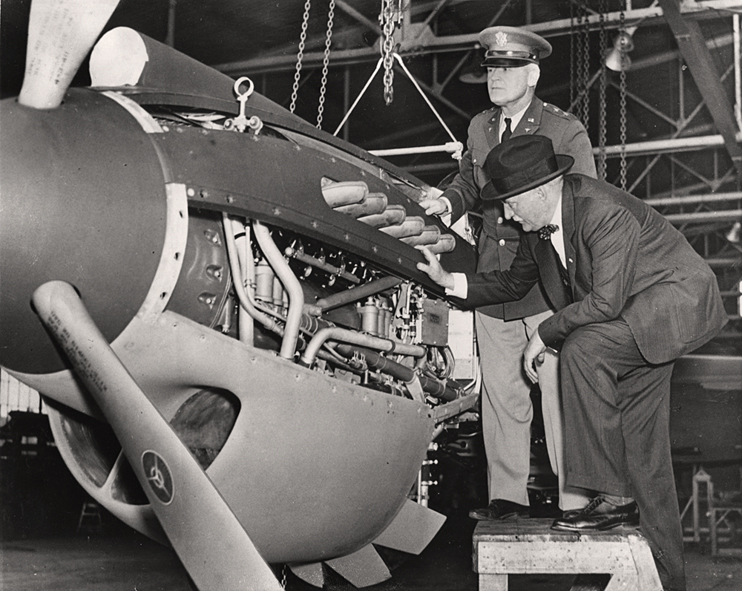
Project 914 Archives (S.Donacik collection) -
Larger Image
News Tag on Reverse of Print
A Tomahawk for the Royal Air Force under construction at Plant #1.
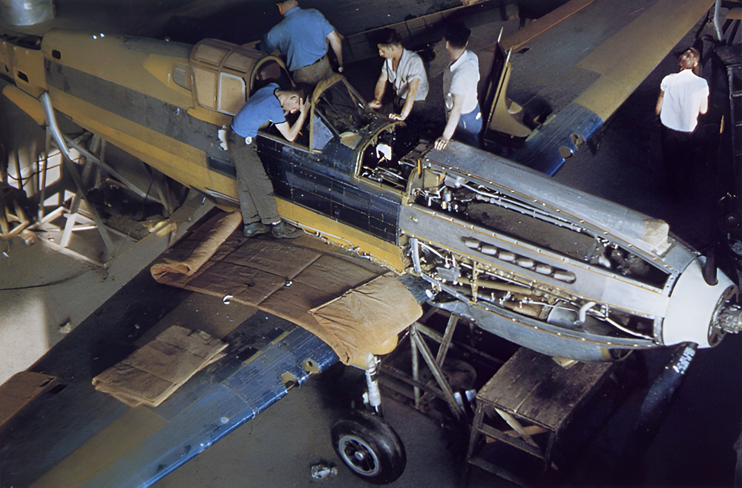
Project 914 Archives (S.Donacik collection) -
Larger Image
A trio of newly constructed P-40Es stands just outside the equally new Curtiss Plant #2
at the Buffalo Airport in Cheektowaga, New York, mid-1941.
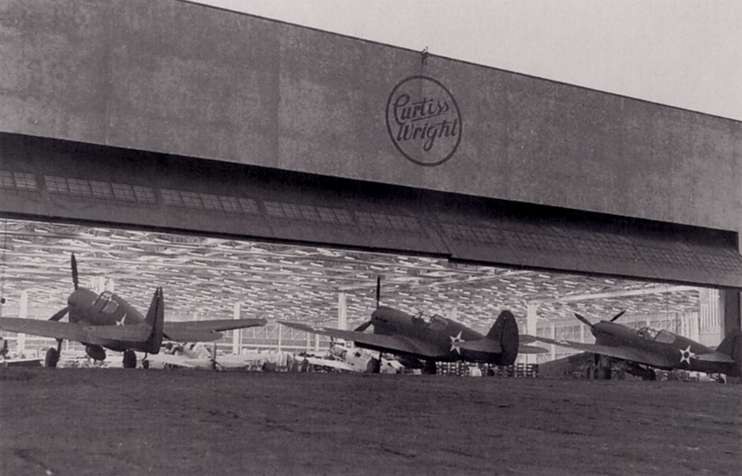
From an ish of the 'Curtiss Fly Leaf' -
Larger Image
An early P-40F and C-46A under construction at Plant #2 during February of 1942.
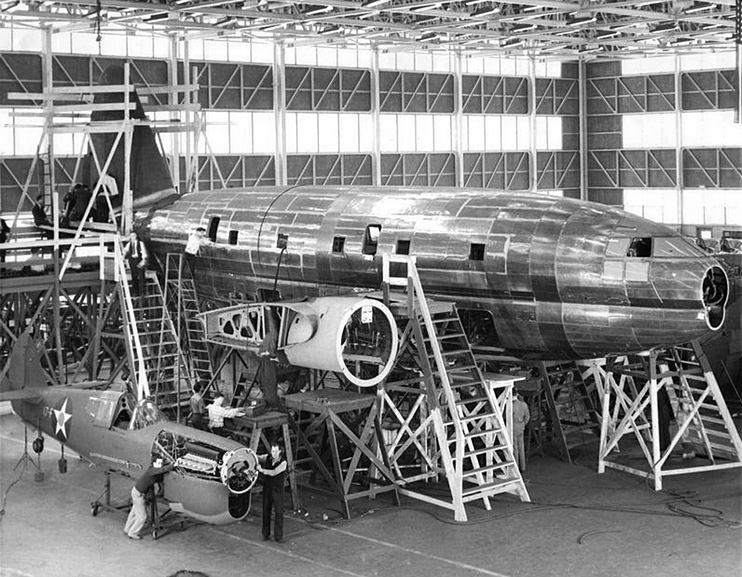
Project 914 Archives -
Larger Image
News Tag on Reverse of Print
Later P-40Fs and C-46As at Plant #2, August of 1942.
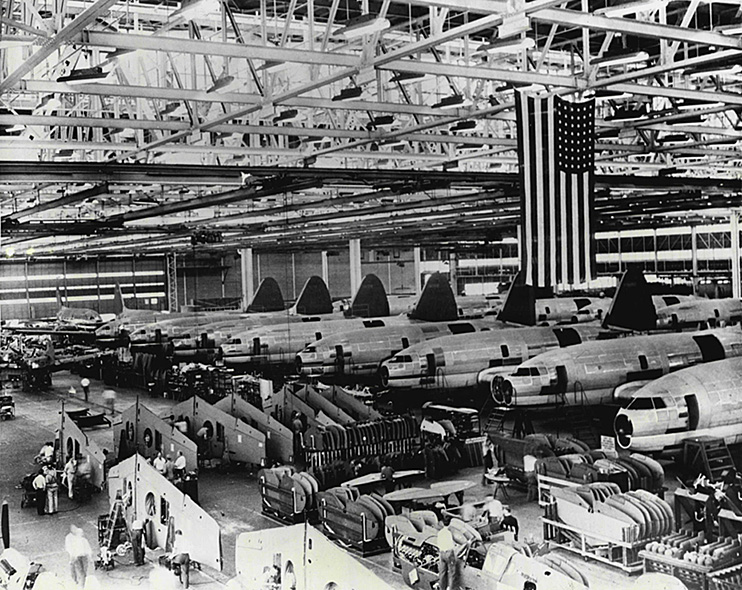
Project 914 Archives -
Larger Image









